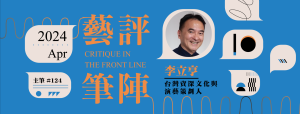Dutch recorder player Erik Bosgraaf, together with Hong Kong Philharmonic Orchestra members, Benjamin Moermond as bassoonist and Alessandro Pianu as harpsichordist, performed Baroque works by Telemann, J.S. Bach and Vivaldi in Hong Kong City Hall on 11th February 2017.
The programme notes was well-written, with a pleasing balance of historical information of the pieces and general introduction to Baroque music and instruments. The concert commenced with Telemann Suite Pastorelle, TWV 55:Es2. Bosgraaf has shown his incredible technical facility, particularly in Overture, but unfortunately there was a lack of balance and the orchestra often overpowered Bosgraaf. The volume produced by harpsichord throughout the whole piece was also limited, making it hardly audible. The different ability in sound projection of instruments to the audience seat should be better considered. In the Overture, despite some minor slips, Bosgraaf surely demonstrated his mastery over the instrument. There was effective phrasing, coupled with clear articulation. There was also a pleasant delineation of melodic lines. The orchestra had a good grasp of the dance styles in the Suite, especially in Menuet. The dances generally were performed with rhythmic vitality and some effective shaping of materials, but the Sarabande somehow sounded a bit too rigid in terms of the form and phrasing. A sense of theatricality was displayed by a creative use of suspense. In Bourrée, there were some inaccuracies by the concertmaster. Bosgraaf succeeded in creating the atmosphere and bringing out a lively moment in Passepied. Gavotte was played with clear rhythmic purpose. The silence between Gavotte and Gigue further added a sense of drama to the whole performance. Gigue, with its rhythmic momentum, provided a sense of conclusion of the work. Some understanding of Baroque rhetoric was revealed, such as some subtle tempo shifts according to the musical direction, taking time at cadences.
It was followed by J.S. Bach’s Concerto in D minor, BWV 1059, which was originally written for strings, oboe and harpsichord. Bosgraaf directly began this piece after the applause, but the staff allowed latecomers to enter the hall when the orchestra was already playing, reflecting that better communication between parties was imperative. The first movement, Allegro, was full of dynamic energy and naturally flowing, without making the piece mechanical. The performance had a sense of structure, with cohesion of musical materials. There was a well-planned build-up and release of tension and a suitable amount of support from celli and double bass, though the violins at times overpowered the harpsichord. In the second movement, Adagio, Bosgraaf’s breathing was natural and his playing was able to imitate a soprano singing. The performance certainly evoked sophisticated emotions and brought peace, warmth and, at the same time, sorrow to one. The third movement, Presto, again was given its rhythmic pulse and displayed Bosgraaf’s virtuosity. Bosgraaf’s interpretation of this Concerto reflected his attention to details, such as traditional articulation to indicate phrasing even when playing rapid notes, making use of subtle silence between notes for grouping.
After the intermission, Bosgraaf performed Telemann’s Double Concerto for Recorder and Bassoon, TWV 52:F1, with Benjamin Moermood, the principal bassoonist of HK Phil. It was undoubtedly one of the highlights of the evening. After a brief introduction, here came the entry of bassoon. It was a pity that both the bassoon and recorder were overpowered by the strings at the beginning. Nevertheless, both the bassoon and recorder had a fabulously rich tone, and the dialogue between them was colourful and unfailingly impressive. The second movement, marked Allegro, was full of technical rigour from both soloists with rhythmic drive. The interaction between bassoon and recorder, such as imitation of each other, was miraculously executed with great rhythmic and pitch precision and a lot of liveliness, showing good cooperation. There was a very effective communication with the audience, and they were able to deliver the music to the audience. Both the bassoonist and recorder player displayed high level of clarity in articulation. The following movement, Grave, was performed with suppressed passion and lament. The textural changes were handled carefully. The deep emotions conjured from the intricate harmonies were able to move audience. Allegro Andante was played with propulsive energy, exuberance and authority. The interplay between the soloists was sparkling, and the tempo modifications were neatly executed.
After the ebullient applause, Bosgraaf performed the last piece in the programme, Sopranino Recorder Concerto in C, RV 443 by Vivaldi, which was also technically precipitous. Despite the high register, Bosgraaf could produce a bright, but not sharp tone from the sopranino recorder. Wide intervals in general had a high level of accuracy. Bosgraaf and HK Phil’s rendition of the first movement was energized and revealed the Italian passion in it. Largo was performed with a clear, gradual preparation for climax and a singing tone from Bosgraaf. The phrasing here was refined and polished and there was a better balance between the recorder and orchestra, probably due to the higher ability of higher pitch to be transmitted. The despair and remorse in the music was effectively conveyed. Bosgraaf showcased his virtuosity with verve and refined articulation in Allegro molto. For instance, he made subtle changes to the articulation for different musical groups to indicate the intensity of emotions. Ornaments were treated carefully with some innovations.
Bosgraaf concluded the concert with J.S. Bach’s O Mensch, bewein dein Sünde groß, BWV 622, arranged for recorder and orchestra, having an essential pureness and meditative quality in the performance. The impressively mellow tone of the recorder helped bring the transcendental beauty, calmness and peace of the piece, leading the audience to feel the love of humanity and mankind. Deeply touching, this piece was made unforgettable and the melody lingered in one’s mind for some time.
Eric Bosgraaf’s debut with HK Phil, which should have had more promotion, has been highly successful. Bosgraaf’s virtuosity and musicality was deeply impressive, making it certainly an enjoyable experience.
本網站內一切內容之版權均屬國際演藝評論家協會(香港分會)及原作者所有,未經本會及/或原作者書面同意,不得轉載。









